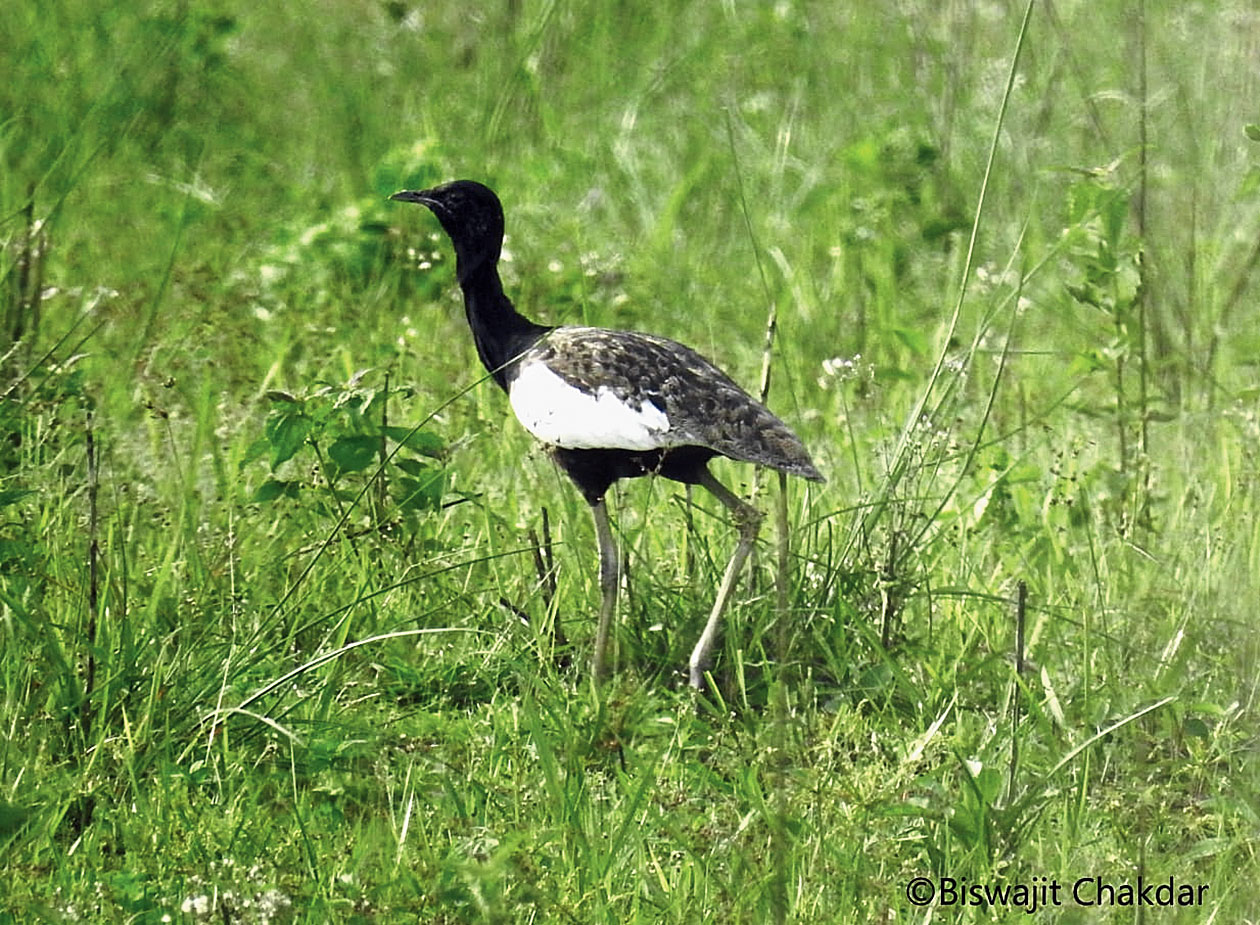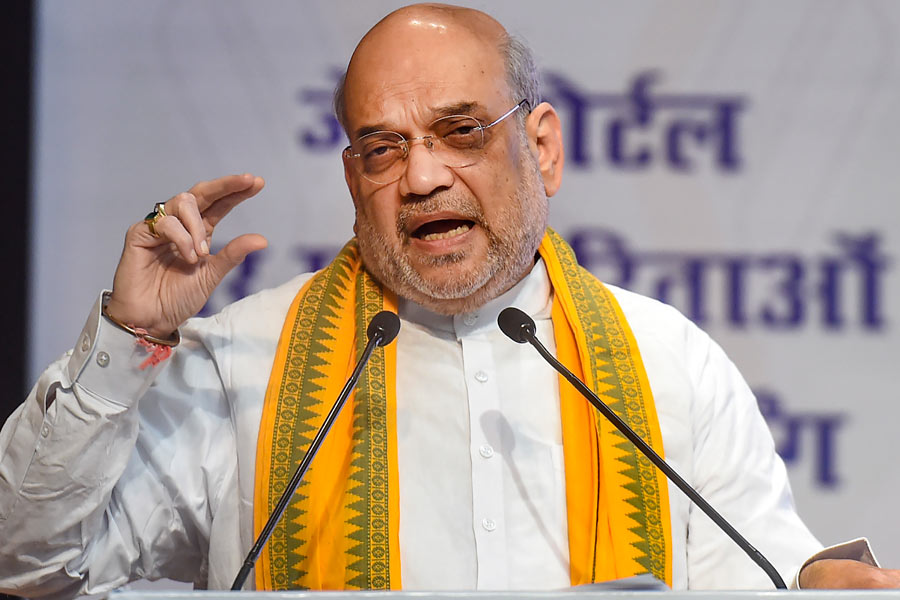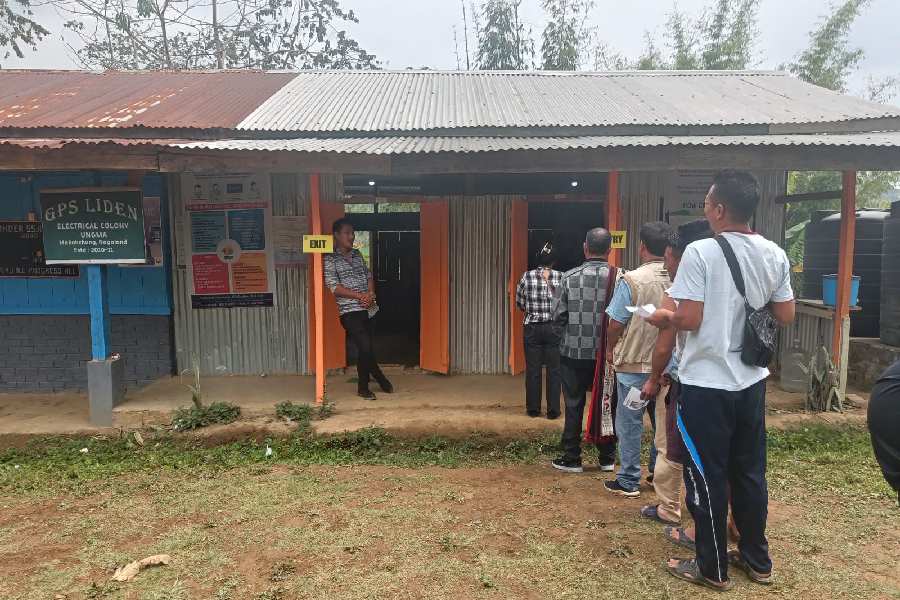The critically endangered Bengal florican (Houbaropsis bengalensis), the last stronghold of which in the country is Manas National Park in Assam, is likely to be included in the global list for international protection under the United Nation’s Convention on the Conservation of Migratory Species (CMS) of Wild Animals.
The announcement is likely to be made at the 13th Conference of Parties (COP) of the CMS to be held at Gandhinagar in Gujarat from February 17-22.
In the Indian subcontinent, the species no longer breeds outside the protected areas such as a few pockets in the Brahmaputra flood plains of Assam, says the proposal put up by India for inclusion in Appendix I of the CMS. Appendix I comprises migratory species which have been assessed as being in danger of extinction throughout all or a significant portion of their range.
Bibhuti Lahkar, a grassland specialist with Aaranyak who has worked on Bengal florican, said, “The Bengal florican is an iconic, critically endangered species of topmost conservation priority. It exhibits trans-boundary movements and its migration exposes it to threats such as land-use changes and collision with power transmission lines on the India-Nepal boundary. It is found in India, Cambodia and Nepal. In India, its stronghold population is Manas National Park in Assam. The species is on the brink of extinction due to lack of resources and monitoring skills that has created a void in our understanding of the bird’s survival.”
The bird is called ulu moira in Assamese and dao triling in Bodo.
The last survey done in 2014 put the estimated population of the species in Manas between 50 and 60 of its estimated population to 300 in the country, Lahkar, who has been shortlisted for the Whitley Award 2020, said.
“Bengal florican is a grassland species and its existence is closely linked to habitat. The key threats to grassland are overgrazing by livestock, collection of thatch from florican habitat, invasive plant species and agriculture in non-protected areas. From 1988 till 2003, armed conflict in the Manas landscape had disrupted park management completely. Anthropogenic pressures have also severely affected the grassland that still exists. However, revival of the landscape started 2005 onwards. Prior to the conflict, Manas had a Bengal florican population of about 80-90,” Lahkar said.
The government is trying to protect the species but habitat management issues such as fire, livestock grazing and restoration of invaded grassland need to be tackled urgently. More sensitisation programmes are also needed to bring awareness among stakeholders, he said.
Surveys have shown that there is a good population of the species in D’Ering Memorial wildlife sanctuary in Arunachal Pradesh too.
The Union ministry of environment, forests and climate change says in its proposal that the inclusion of the species in Appendix I of CMS will aid in trans-boundary conservation efforts facilitated by international conservation bodies and existing international laws and agreement.
CMS is the only United Nations treaty that addresses migratory species and their habitats.
The theme of CMS COP13, “Migratory species connect the planet and together we welcome them home”, underscores the importance of collective action to protect such species and the way migratory species connect places, nations and people.










